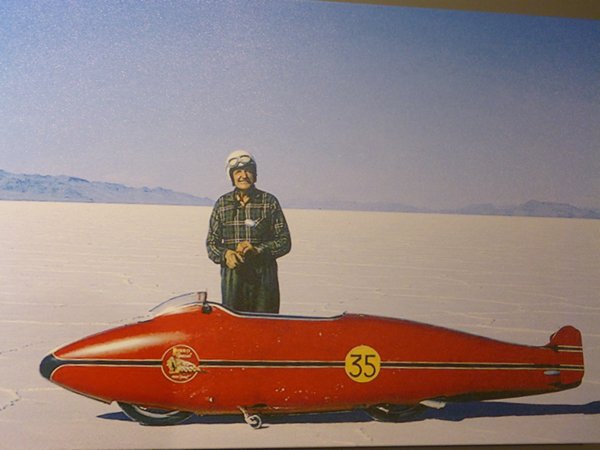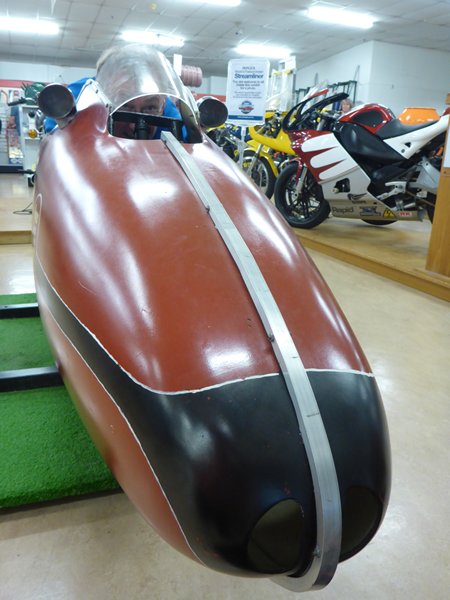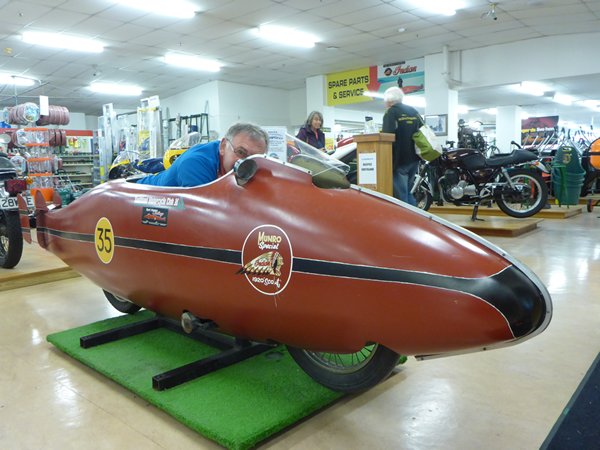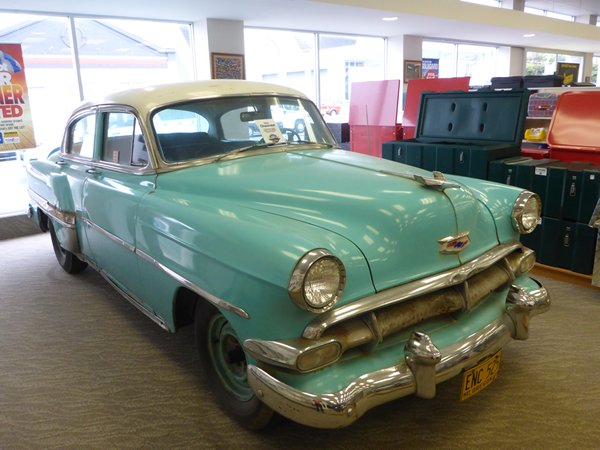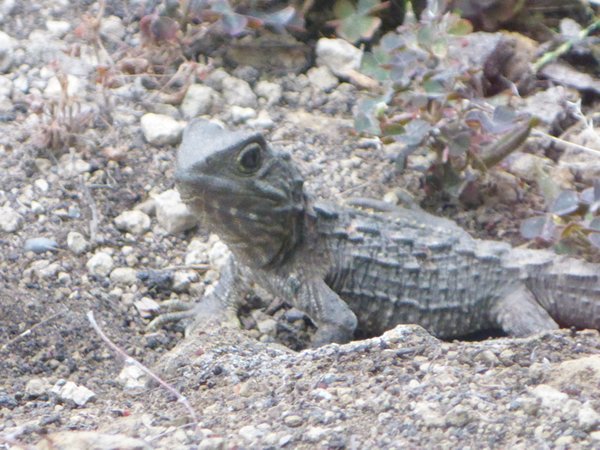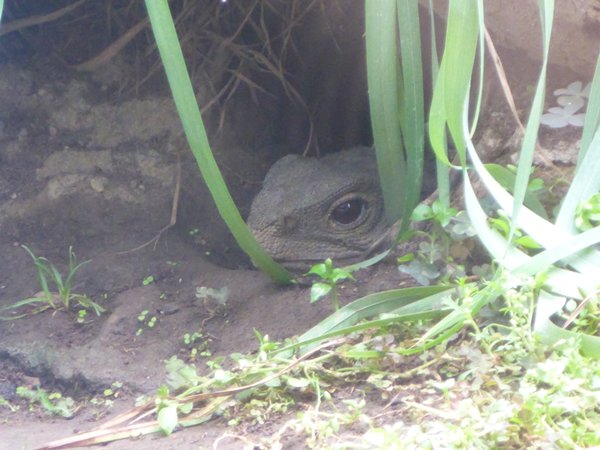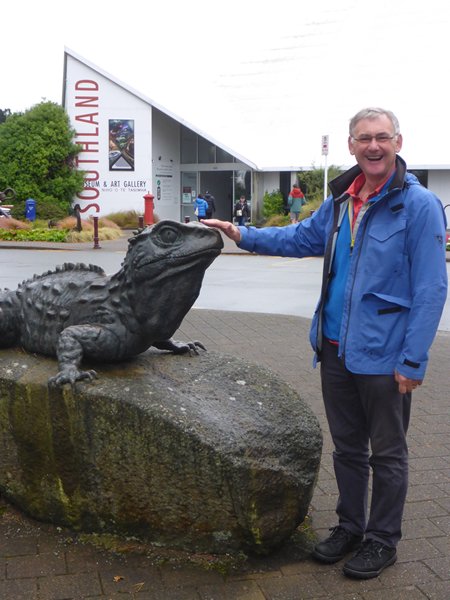A Tale of two males from Invercargill

|
A Tale of two males from Invercargill Staring into the sandy distance topped with clear blue sky it was easy to see and hear, in one’s mind, the Fastest Indian Scout, ridden by Burt Munro, race along Oreti Beach at 151.36mph exactly 60 year ago. Ten years later Burt took the little red bullet to Bonneville Salt Flats in Utah and set the World Speed Record at an average of 184.08mph. All this achieved on the same bike he bought for $120, 57 years before. When he emerged from the bike onlookers were not as surprised by the bike or the achievement as they were by his age. Born in 1899 Burt’s famous quote was “You live more in five minutes on a bike like this than most people do in a lifetime”. Invercargill remembers him well. He sold his collection of bikes, and most of the contents of his shed, including all the broken and spare parts and his trailer to Norman and Neville Hayes who ran the family business of farming and engineering products, many invented in house. Today the descendants still run the E. Hayes family store, which had diversified into hardware, engineering and homeware products and services. The store is vast and beautifully set out and lit and includes their famous 100 metre tool wall. Woven in with the shelves of products is an extensive collection of classic, vintage and modern motorcycles, automobiles, engines and memorabilia which is free to view during shop hours. The prize exhibits tell the story of Burt’s speed record career and its world fame preserved in the film starring Anthony Hopkins which is shown continuously from a wall mounted TV. I sat watching the film and sipping complimentary hot chocolate while Rob chatted to the sales assistant. There are numerous replicas of the Fastest Indian which were used in the film and customers can climb into one of them and imagine for a few moments the thrill of speed that was the essence of Burt’s life. Rob took no encouraging! Born at around the same time as Burt and still alive today is a direct descendant from the age of dinosaurs, Henry the lizard-like Tuatara. He is a venerable old reptile who came to enjoy mating very late in life due to a libido suppressing growth in his rear end. After a clever lady vet took the risk of removing the passion killer Henry was ready for some of what comes naturally. Tuataras, like so many indigenous ground dwelling animals in NZ have suffered predation from the likes of introduced cats, dogs, rats and possums and they thrive now mostly on outlying islands. So on the ISite/museum campus there is a breeding programme in which he is only too willing to participate. Looking into his light and airy home, linked by open topped glass walls to the outside atmosphere, I watched him in his little burrow peeping out and very still. He used to attack all the females he was put in contact with so originally another male was brought in. That male was so successful he had to be isolated for fear of the gene pool becoming too limited and the poor chap literally lost the will to live and faded away. So now it’s down to Henry. For our short stay in Invercargill we camped in the Central City Park and had a little issues with the local birds and the air mattress. On our first morning we awoke to feel deflated and see spots before our eyes. The air mattress had oozed air during the night. “I’m not having this, I won’t sleep on the ground!” “But darling I’m ok, there’s still a little buoyancy between me and the floor.” I was fearing the looming expense of a replacement. “That’s because I am heavier than you so I am keeping you afloat!” The dynamics made us laugh. But emerging from the tent the cause of the spots wiped the smile from our faces. It was covered with Tui poo, bird bombs, yucky guano, name it what you like our little tent was crying shit. So while Rob slithered around the airbed with a soapy sponge trying to find the leak I washed the tent and thought we could drag it out from under the trees into a patch of clear sky and hope the birds only pooped when perched. No such luck. The next morning it was just as bad. Goodness knows what they ate around there but they sure had plenty of it. In the Outdoor store, Kathmandu, Rob and I suggested the lady staff member give us a little space so we could have a calm domestic about the merits of buying a new-fangled, self-inflating, wallet shrinking airbed. $230 later the air was pale blue as we returned to the sanctuary of Vicky, Rob delighted with his acquisition and me wondering how to restart a conversation. Problem is I used to find it a bit hard even using our squeaky stirrup pump, to the amusement of neighbouring campers, to do the required number of pumps to fill our $20 Warehouse special, so poor Rob usually at least finished it for me. I was very good at falling all over it the next morning to make it small enough for its bag. Well now the problem is reversed. I happily lay out the new bed on the foam rolls and undo the valve, listening as it takes a mighty intake of breath while the soft springs inside straighten out. But the next morning it takes all my body weight and a few risky jumps up and down to make it small enough to stow away. Ah well, that’s camping. While using the camp kitchen for breakfast and dinner we had some interesting chats with two couples about freedom camping. We had heard various NZ resident views and wanted to know if the public consensus against them was fair or just the narrow views of those who generalise about the actions of a few. Both couples combined official sites like the one we were in with freedom sites, so they could have showers for example. The older couple had been doing it and loving it for years and met many fellow fc’s with like minds and the younger couple from London plan to do the same in other countries. They said they would only do it if there were others there, safety in numbers, but the older couple have pitched alone in many places. Neither had seen evidence of the unpleasant habits we had been advised typified them and they felt they contributed as much to the economy as anyone else camping on a budget. The tent nice and clean and the airbed tucked away we turned onto Highway 99, The Southern Route and enjoyed the last glimpses we would have of the Southern Ocean. The beautiful expanse of Colac Bay in the Foreaux Straight was a surfers’ paradise for the waves rolled in uninterrupted from the ocean, missing Stewart Island around the corner. The land either side of us was far away farming with the Longwood Range of hills on the right covered in native bush. Sheep and cattle grazed naturally green pasture. Pretty belted Galloway cattle spotted the hillsides, a wetlands reserve looked after the needs of water fowl and high wire fences enclosed deer farms, stocked originally from the over-abundance of deer introduced from Scotland for the rich countryfolk to hunt and now a lucrative income is made from farmed and hunted deer. Flax, Pampas grass, willow, orange blooming Monbretia, palms and broom bordered the roadside as the psychological second half of our journey unrolled before us. We were heading for FJordland. |

